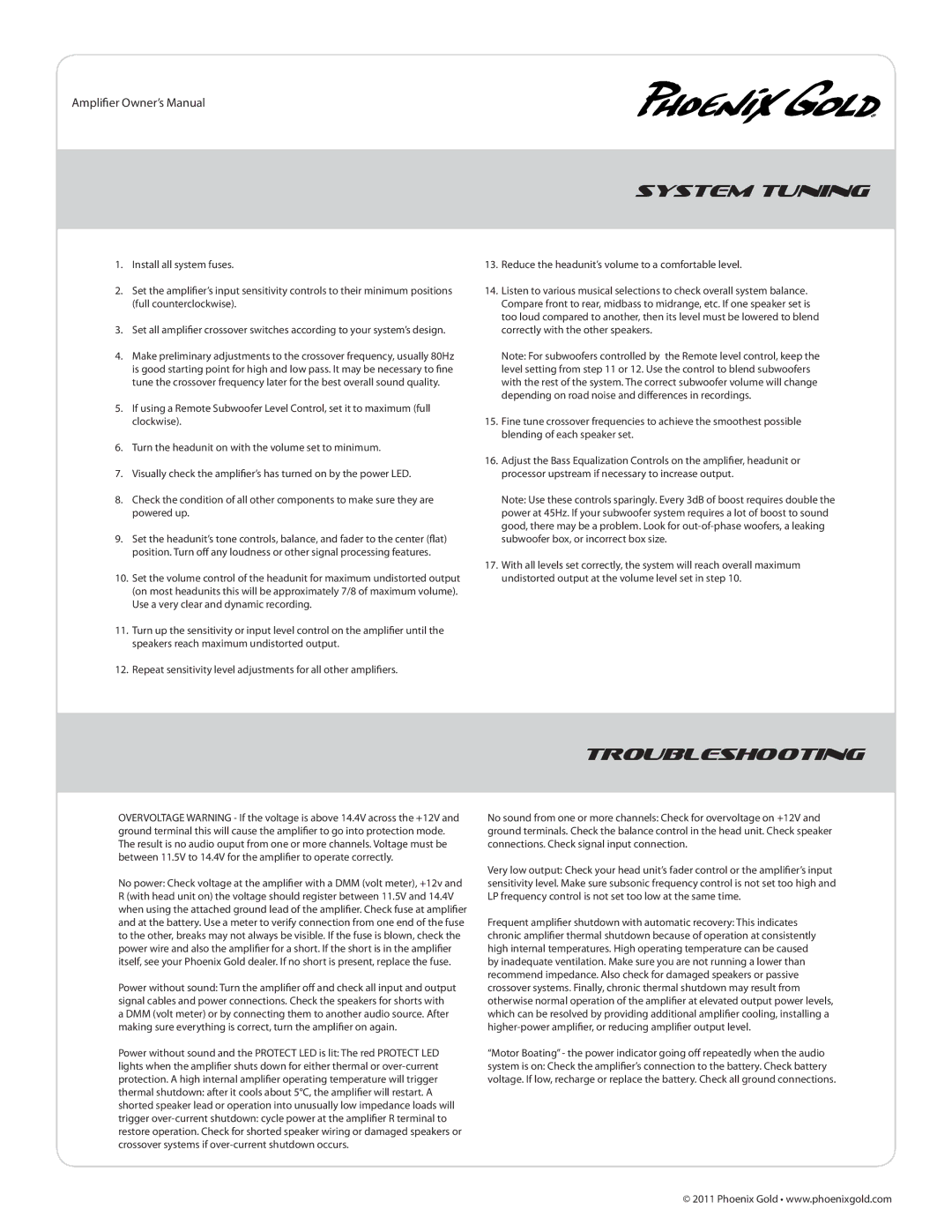SD1300.5, SD1300.1 specifications
Phoenix Gold has long been synonymous with high-quality car audio equipment, and the SD1300.1 and SD1300.5 amplifiers exemplify the brand’s commitment to both performance and innovation. Designed to meet the demands of modern audio enthusiasts, these amplifiers combine advanced technology with powerful outputs, making them ideal for a wide range of audio setups.The Phoenix Gold SD1300.1 is a monoblock amplifier that boasts a peak power output of 1300 watts, providing ample power for subwoofer applications. One of its standout features is the Class D design, which not only ensures high efficiency but also allows for a compact and lightweight configuration. This design minimizes heat generation, ensuring the amplifier can perform at its best without the risk of overheating, even during heavy usage. The adjustable low-pass filter allows users to customize the frequency response to suit their specific audio installation, ensuring that bass notes hit hard and clean.
On the other hand, the SD1300.5 is a versatile 5-channel amplifier that delivers an impressive 1300 watts of power across its channels. This makes it ideal for driving a full-range speaker system, including both subwoofers and full-range speakers. Featuring a balanced differential input section, the SD1300.5 minimizes noise and interference, resulting in crystal-clear sound reproduction. Additionally, the amplifier employs advanced circuitry that ensures low distortion, preserving the integrity of the audio signal for an accurate listening experience. The built-in variable high-pass and low-pass filters enable users to fine-tune the performance of their system, optimizing audio output based on personal preferences or vehicle acoustics.
Both the SD1300.1 and SD1300.5 are equipped with innovative thermal protection systems, ensuring reliability and longevity, even in challenging environments.
Their sleek and modern design makes them aesthetically pleasing components in any car audio setup, while the rugged construction guarantees durability.
Ultimately, the Phoenix Gold SD1300.1 and SD1300.5 amplifiers represent cutting-edge engineering and performance, making them exceptional choices for audiophiles looking to elevate their car audio experience. With their powerful outputs and advanced technologies, these amplifiers are perfect for users who demand clarity, power, and versatility in their audio systems. Whether you're building a subwoofer-centric configuration with the SD1300.1 or a comprehensive multi-channel setup with the SD1300.5, Phoenix Gold continues to set the standard in automotive audio excellence.

